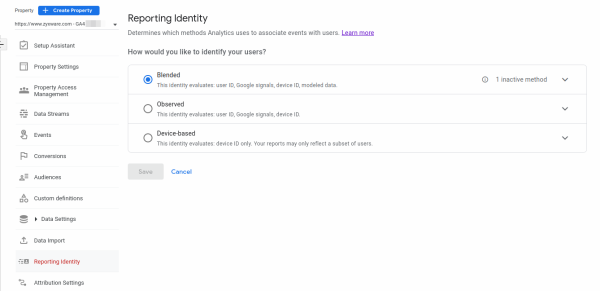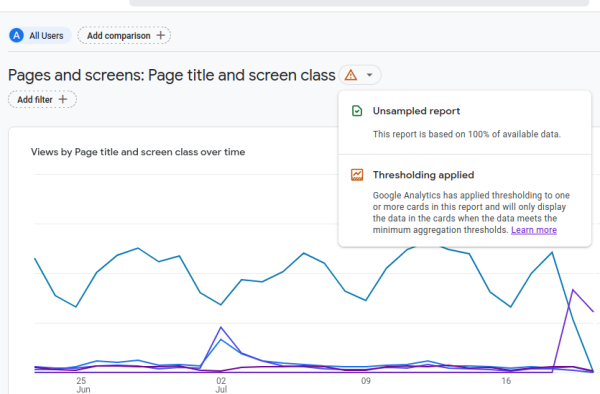Unraveling the Mystery of Missing Page View Data in Google Analytics 4 Reports: Understanding Thresholding
Are you perplexed by data on certain pages that seem to be missing from your Google Analytics 4 (GA4) reports? Do you find discrepancies between the numbers displayed in GA4 Search Console reports and the actual data in the search console? The answer to these puzzling situations lies in a concept called "Thresholding"1 , implemented by Google to prevent anyone from identifying the user based on the information available.
What is Thresholding in GA4?
Thresholding is a privacy measure adopted by Google Analytics 4 to safeguard user information and prevent individual user identities from being inferred. This practice hides specific data points in reports, ensuring no personal information is revealed. So, if you encounter a message stating "Thresholding applied" when checking the report status icon in the top right corner of your GA4 reports, certain records that do not meet Google's threshold parameters are being concealed.
How do I see All Pages or Events in GA4?
But don't worry, if you're eager to see those missing records, there's a solution. You can change the reporting identity to "device based" to reveal the data that is being hidden. While the recommended reporting identity2 is "blended," there are instances where using "device based" can be beneficial, especially if your website has numerous pages with very few visitors or forms that receive low submission rates within a short period.

To update your reporting identity, you have to change the settings available in the GA4 Admin -> Property Settings -> Reporting Identity.
An Illustrated Example with the Google Search Console Data
Let's take a closer look at how this affects your Google Search Console data in GA4. Many pages on your website might have only a handful of visits, say 10 or 15 users. When using the "blended" reporting identity, these rows might not appear in your GA4 reports, and consequently, the total number of clicks and impressions displayed will be significantly lower than what you see when directly accessing the Search Console interface. To view the actual values in GA4, try switching the reporting identity to "device based."
Identifying Reports with Data Thresholds

When a threshold is applied to a report or exploration, the data indicator changes color. Hover over the indicator to get more information. This indicator can also help identify when sampling is applied.
Impact on Reports
Google Signals: When Google Signals is enabled, and the user count in the specified date range is low, data in reports may be withheld. Even after disabling Google Signals, the reports may still be subject to Thresholding for a limited period.
Demographic Information: If the reporting identity relies on the device ID and there aren't enough total users, specific rows containing demographic data may be withheld.
Search Query Information: Reports or explorations that include search query information may also experience Thresholding if there aren't enough total users.
Search Console Information: The search console report in GA4 may also experience Thresholding if there aren't enough total users.
Adjusting Date Range: Narrow date ranges with low user or event counts may trigger data thresholds. Expanding the date range can reveal previously thresholded data by increasing the number of users who triggered an event.
Conclusion
GA4 Thresholding is a privacy measure that ensures user anonymity. While it might hide certain data points, understanding how to adjust reporting identities can help you see the data you seek. If you are a new GA4 user and want to understand specific details or have questions on how to do something in GA4? Let us know. We can help you understand your GA4 setup better.



